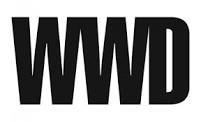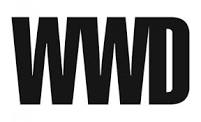Picture a typical middle class family.
 |
| Click here to read the full article on WWD |
| Click here to download PDF of Article |
What comes to mind? Perhaps a suburban home in Indiana, Georgia, or Long Island, which is the birthplace of Levittown — a social petri dish of the post-World War II American Dream. There are two late-model SUVs in the driveway, a well-groomed lawn and two or three children — smartphones in hand — getting ready for a weekend soccer match.
Inside the house, the living room has a 55-inch Samsung flat-screen HDTV and new furniture. In the recently remodeled kitchen there are higher-end, stainless steel finished appliances.
All is seemingly normal.
Peel away the veneer of this suburban bliss, though, and there’s another tale to tell — one that many economists — and politicians on the stump — warn is the evaporation of the middle class. It’s a story of a family who has less household wealth than prior generations; is saddled with higher food bills; faces high property and school taxes, and has lived with real wages that have stagnated for years as well as household liquidity (or cash on hand) that is virtually nonexistent.
Welcome to the reality of the new American Dream, and the new “middle class.”
For retailers, fashion apparel companies — and anyone who sells consumer products in the U.S. for that matter — this new consumer presents a challenge. How do you cater to a customer who is aspirational for higher-end goods, but is living nearly paycheck to paycheck? Or a household that just spent $10,000 on a weeklong vacation in Florida, but is spending less money on clothes at the mall? Or the Millennial who works a low-wage job and lives at home with her parents, and only frequents off-price retailers when apparel shopping (or relies on mom and dad to buy her clothes, even at age 25)?
Jim Cusson, president of retail branding agency Theory House, said, “For years, analysts have warned that shifting socioeconomics will pose a threat to retailers and brands, but that has really not played out — until now. We see a more pronounced income gap that has high-end retailers thriving while once-stable banners like Sears, J.C. Penney and Kmart are on the ropes. We also see Millennial-driven banners like H&M and Forever 21 expanding as Millennials shift from logo-driven banners like Abercrombie.”
Robert Reich, professor of public policy at the University of California at Berkeley and senior fellow at the Blum Center for Developing Economies, served as Secretary of Labor during the Clinton administration. In research notes, blog posts and editorials, Reich argued that the widening gap between the rich and the poor is bad news for the economy. The U.S. economy needs a robust middle class. Last fall in a blog post, Reich wrote the “real job creators are not ceos or corporations or wealthy investors. The job creators are members of America’s vast middle class and the poor, whose purchases cause businesses to expand and invest.”
But that vast middle class is losing economic steam. In a report last fall, Pew Research Center said the gap between middle-income and upper-income families is at its historical widest. The research center said the “median net worth of upper-income families is 6.6 times greater than that of middle-income families” as compared to the Sixties and Seventies. And to be considered “upper income,” a family of four must earn $132,000 a year. Pew also said the median net worth of middle-income tier households fell to $93,150 in 2010 from $152,950 in 2006 — a statistic not lost on 2016 presidential candidates.
From Jeb Bush to Hillary Clinton, the early campaign rhetoric is laced with references to income inequality. But it’s a sensitive topic that causes a lot of angst — and covers a lot of potential voters. In a report last month, Pew Research revealed that nearly 90 percent of respondents described themselves as “middle class” despite having various income levels.
The former secretary of state, in launching her campaign, zeroed in on this issue. “Americans have fought their way back from tough economic times, but the deck is still stacked in favor of those at the top,” Clinton said. “Everyday Americans need a champion and I want to be that champion.”
“Everyday Americans” is a carefully worded phrase that’s extremely inclusive and pedestrian — like having “everyday low prices” — without specifically mentioning the words “middle class,” which Clinton campaign officials have indicated are a no-no because they imply instability in today’s world.
Americans are consumers, after all. Greg Petro, chief executive officer of First Insight Inc., has a pulse on consumers, retailers and vendors alike. Petro closely tracks macroeconomic issues and said from his seat there’s a shift occurring at the top-income quintiles. Petro said over the long term, it’s “not necessarily that the middle class is disappearing, but more that we’re seeing an acceleration of wealth at the top.” In his view, the issue is more complex than it seems, and there are macroeconomic factors to consider.
For the lower- and middle- income groups, for example, lower gas prices are bolstering local economies and making life easier for many families. And these savings are being spent. However, Petro said this tier of consumer is not spending on fashion apparel and accessories. Instead, they’re eating out more and doling out money on other “experiential” purchases that include travel and lodging.
In short, Petro and others contend the middle class isn’t disappearing — it’s being redefined. So what can retailers do to address these changes? It could be as simple as knowing the customer. Kohl’s, which is positioned squarely in the middle, is trying to do just that. In a recent ratings report, Fitch analysts praised Kohl’s for its “continued focus on upgrading its national brand presence, adding over 15 new brands to its portfolio in 2014, realizing 180 basis point growth in national brand penetration to 50 percent of sales.”
Kohl’s is targeting brand-hungry, aspirational, value-hunting consumers — which is a complicated set of preferences to sell against. A big part of its effort is aimed at Millennials. On that front, Kohl’s is joined by retailers such as Target Corp., J.C. Penney Co. Inc., Wal-Mart Stores Inc., Macy’s Inc. and a host of specialty retailers from American Eagle Outfitters and Abercrombie & Fitch to Urban Outfitters Inc. and Zumiez Inc. All are vying for the attention of the Millennial generation, and viewing them as a panacea to the market’s economic woes.
Millennials, though, are inconsistent when it comes to brand loyalty. In a “Top 50 Millennial Brand Ranking Report” released last fall by digital advertising agency Moosylvania, 18 of the top 50 favorite brands were new to the list as compared to the prior year’s survey. This means 36 percent of their favorite brands were new ones. New to the list was Wal-Mart, which came in fifth place.
Sure, Millennials are the biggest generation ever — composed of 92 million people compared to the Baby Boomer’s 76.4 million. But according to a recent report from Goldman Sachs, this generation will see some of the largest percentages of their incomes going to student-debt loads than any other. Many are living with their parents, and have weaker earnings and lower employment levels, according to the report. This may explain why Wal-Mart is now a favorite brand: Millennials are broke and can’t afford to shop anywhere else.
As Baby Boomers age, it’s unclear if Millennials — who will make up two-thirds of the U.S. workforce in ten years — will have enough spending power to sustain the economy. According to the Bureau of Labor Statistics, the greatest job growth areas over the next decade will be in low-paying positions: retail salespeople, cashiers and combined food-service and food-preparation workers.
It’s noteworthy that the modern American consumer is not abandoning retail stores. They are still shopping for electronics, home goods, apparel, accessories and footwear as well as making large purchases on durable goods. After all, consumer spending on goods and services continues to garner two-thirds of U.S. gross domestic product.
The challenge for everyone, from politicians to retailers is to figure out exactly how the “middle class” is changing — and adapt.
















